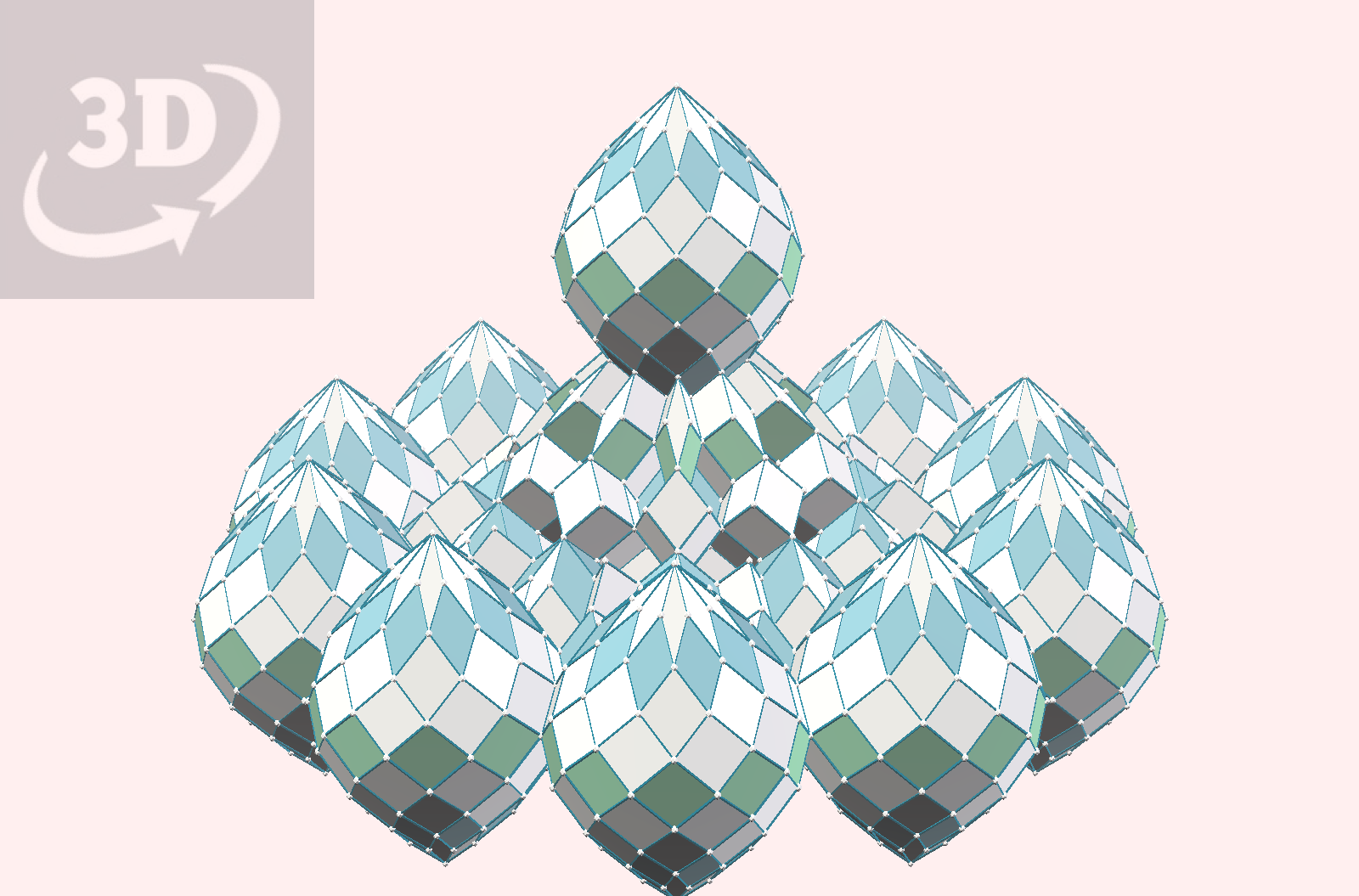Here are examples of related arrays of Polar Enneacontahedra. These share characteristics of arrays that can be built from even number directional systems. Major polar zonohedra use all n directions, and these major cells can be connected to others at shared polar vertices, like strings of beads. They can also be connected in rings that surround polar axes. This can be done in 2 ways, which lead to 2 types of array. In Type I, rings are formed by cells sharing faces with adjacents, in Type II, by shared vertices.
This is a continuation of 9 Directions arrays and others

In the above figure, spaces between origin centered major cell and a ring of 10 major cells can be bridged with minor cells, composed from unit length edges that are parallel with some of the original directions. This is typical of all arrays shown here. In this case, these are rhombic hexahedra, dodecahedra, and icosahedra. Note the ring of 10 polar icosahedra. In this array, centers of the 10 major cells that compose the ring are coplanar with the origin at the center of a major cell. Overall symmetry of the array can continue the symmetries of the original cell, such as n-fold rotational symmetry, and n planes of reflection symmetry that intersect the polar axis. This array does not have an “equatorial” plane of reflection through the origin with polar axis normal to it, as the major cell does, but it could. Chiral configurations of bridgework between major cells can be built, which have reduced symmetry, but none are shown here.

In this Type II array, the surrounding major cell chains have the centers of the cells coplanar with an origin point which is a shared polar vertex of 2 major cells.